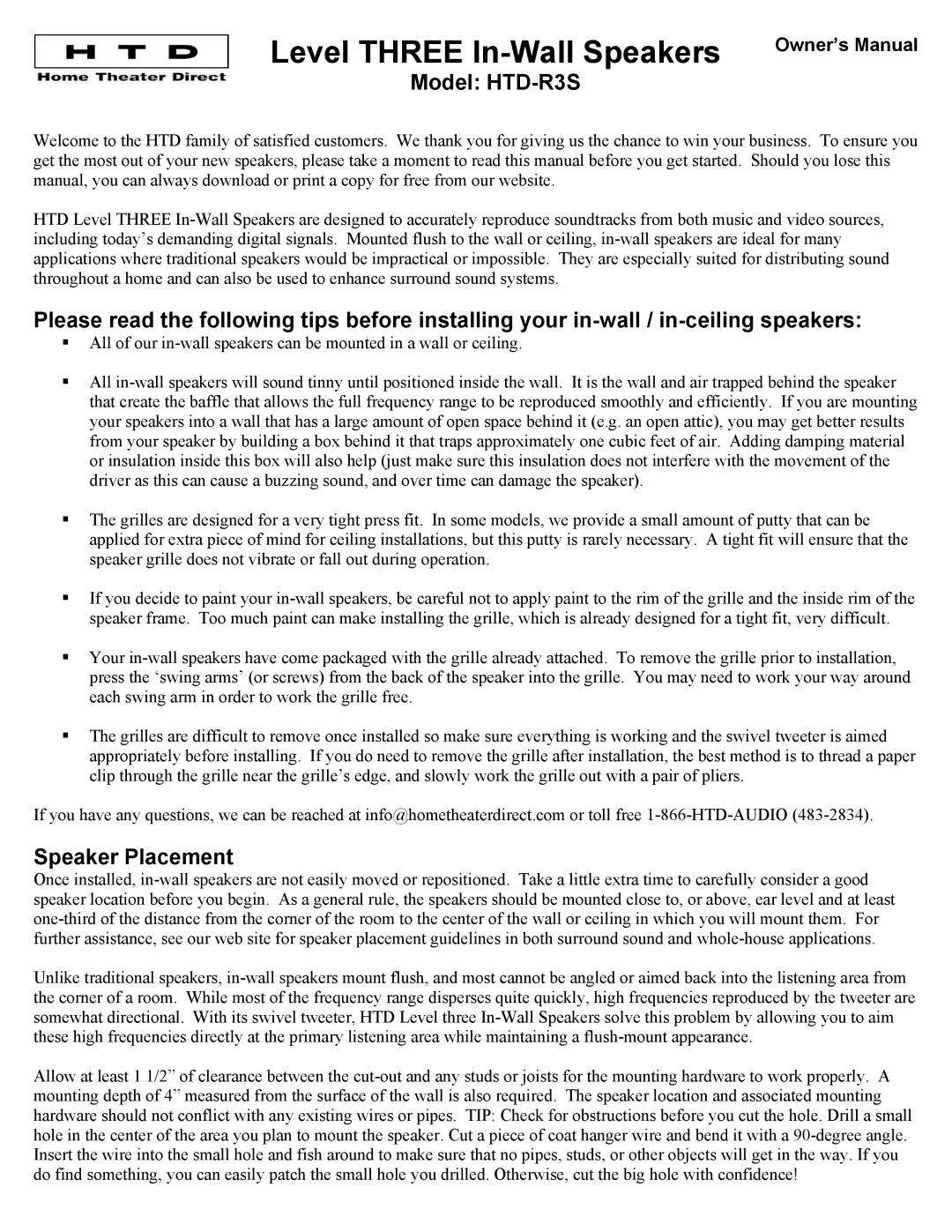HTD-R3S specifications
The Home Theater Direct HTD-R3S is an exceptional speaker system, designed to elevate your home audio experience. Whether you are watching movies, listening to music, or enjoying video games, this speaker model delivers impressive sound reproduction, offering an immersive experience without compromising on quality.One of the main features of the HTD-R3S is its exceptional sound quality. The speaker is equipped with high-efficiency drivers that produce a well-balanced audio output. The presence of dual 5.25-inch woofers ensures powerful bass response while the 1-inch silk dome tweeter delivers crystal-clear highs. This combination allows the HTD-R3S to handle a range of audio frequencies with clarity, making it a perfect fit for various entertainment mediums.
Another highlight of the HTD-R3S is the speaker's sleek design, which allows it to blend seamlessly into any home decor. The cabinet is constructed from sturdy materials that not only contribute to the aesthetic appeal but also enhance sound resonance. Its compact size means that it can be placed easily on shelves, walls, or stands without taking up much space.
In terms of connectivity, the HTD-R3S is designed with versatility in mind. It features a standard 5-way binding post input, allowing compatibility with a variety of receivers and amplifiers. This ease of connectivity makes it a suitable choice whether you're upgrading an existing system or starting anew.
The HTD-R3S is engineered with advanced technologies that enhance the overall audio experience. The speaker utilizes a rear-firing bass port, which optimizes the bass response without compromising on sound clarity. This design helps to create a fuller soundstage, enhancing the listening experience in both small and large rooms.
Durability is another important characteristic of the HTD-R3S. Built to withstand regular use, this speaker is crafted to ensure long-lasting performance. With minimal maintenance, users can enjoy high-quality audio for years.
In summary, the Home Theater Direct HTD-R3S offers a remarkable combination of sound quality, sleek design, versatile connectivity, advanced sound optimization technologies, and durability. This makes it an outstanding choice for anyone looking to enhance their home audio setup, delivering compelling performance and a satisfying listening experience. Whether for movie nights or music sessions, the HTD-R3S promises to impress even the most discerning audiophiles.
